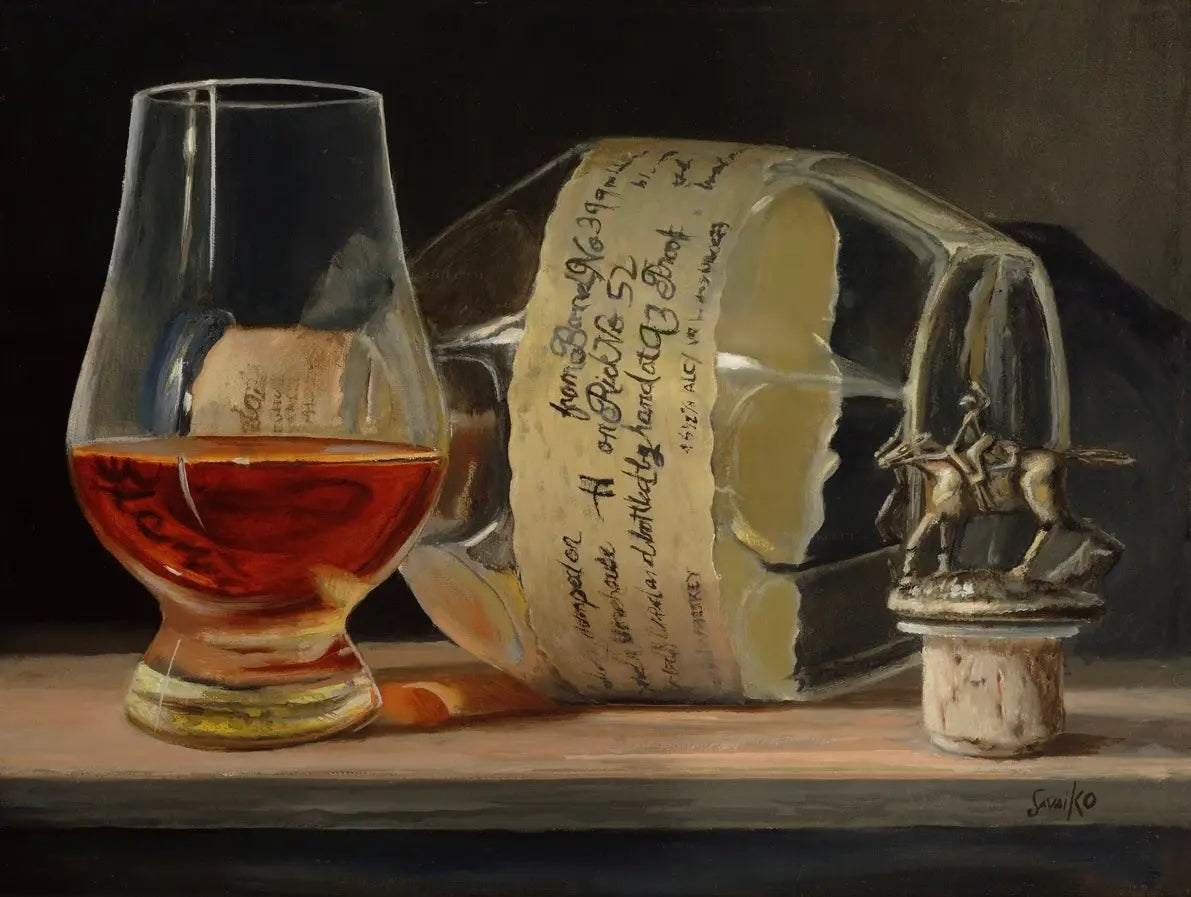Capturing the Significance of Scotch Art Through Special Visual Depictions and Styles
The art of bourbon expands beyond the liquid itself, materializing with a selection of aesthetic representations that encapsulate its storied heritage and workmanship. What stays to be revealed is just how these progressing designs mirror not just the whiskey itself but likewise the altering landscape of creative analysis. Realism Art.
The History of Whiskey Art

As bourbon production spread, so as well did the need to elevate its experience with art. From the detailed engravings on early barrels to the intricate labels of contemporary containers, each element mirrors an unique creative vision, offering as an aesthetic story of the whiskey's heritage.
In the 18th and 19th centuries, the increase of the commercial change further improved scotch art, bring about cutting-edge packaging and advertising that caught customer interest. Musicians and developers started trying out aesthetic appeals, imbuing whiskey-related images with symbolic definitions that shared ideas of workmanship, area, and tradition.
Today, scotch art remains to develop, blending conventional methods with contemporary art kinds. Realism Art. This recurring discussion in between the spirit and its visual representation underscores the long-lasting bond in between scotch and culture, enriching the overall experience for fanatics worldwide
Iconic Container Styles
While several variables add to the allure of scotch, famous container styles play a pivotal role fit customer understanding and enhancing the total experience. The aesthetic presentation of whiskey containers is not merely an aesthetic factor to consider; it serves as a bridge between the consumer and the item, evoking feelings and establishing expectations.
Distinct shapes, products, and closures can raise a whiskey brand name's identity, making it immediately recognizable on congested shelves. For circumstances, the traditional Glenfiddich container, with its sophisticated tapered shape, conveys a feeling of custom and workmanship, while the strong, modern layout of the Balvenie bottle mirrors development and sophistication. Additionally, the usage of colored glass or special textures can suggest the top quality and personality of the whiskey within.
Iconic styles commonly incorporate aspects of social heritage, signifying the brand's background and link to its roots. Brand Names like Jack Daniel's utilize a straightforward, durable design that reverberates with its American scotch heritage. Inevitably, the impact of bottle style expands past mere functionality; it encapsulates the significance of the brand, inviting consumers to delight and discover in the abundant tapestry of bourbon society.
Label Artwork and Branding
Bottle designs frequently set the stage for what customers can anticipate, yet tag artwork and branding play an equally significant role in communicating a bourbon's identification. The tag works as the first point of call in between the customer and the product, enveloping the essence of the whiskey within its aesthetic components.
Efficient label art work incorporates shade, typography, and images to produce a narrative that reverberates with the brand's heritage and target audience. For example, a label featuring intricate images and vintage fonts try this website may evoke a feeling of tradition and workmanship, attracting connoisseurs. In comparison, bold colors and contemporary layout elements might attract a more youthful group looking for innovation and exhilaration.


Digital Photography and Visual Narration
Capturing the significance of scotch through digital photography and visual storytelling is an art form that raises the brand name experience. This medium goes beyond simple product depiction, delving into the detailed narratives that surround each bottle. By using compelling imagery, professional photographers can evoke feelings that reverberate with consumers, inevitably building a deeper connection to the bourbon brand name.
Visual narration in whiskey digital photography frequently uses abundant structures, lighting, and composition to highlight the special features of the spirit. The interplay of light and darkness can emphasize the amber colors of bourbon, while the selection of background components-- such as rustic barrels or classy glassware-- can reinforce the brand's heritage or way of living associations.
Furthermore, catching the ceremonial facets of scotch consumption, from the pouring to the sampling, welcomes viewers into a sensory experience, enabling them to envision the flavors and aromas that wait for. Each photograph not only showcases the item yet additionally tells a tale of workmanship, tradition, and the moments that bourbon can boost - Realism Art. Hence, digital photography comes to be an effective tool in verbalizing the identification of whiskey brand names, positioning them within the wider social landscape
Arising Trends in Whiskey Art
The evolution of scotch art is progressively shaped by contemporary fads that reflect more comprehensive societal shifts and customer choices. This change not only highlights the value of sustainability but additionally boosts the story surrounding bourbon manufacturing.
Additionally, electronic art has risen in appeal, enabling ingenious representations of scotch. Musicians are leveraging modern technology to craft immersive experiences, such as increased truth installations that engage audiences and offer a deeper understanding of whiskey's social significance. This trend likewise extends to social media platforms, where aesthetically striking content garners focus and promotes neighborhood amongst fanatics.
Additionally, partnerships in between scotch brand names and musicians are ending up being a lot more prevalent. These collaborations produce limited-edition packaging layouts and unique artworks that commemorate both the workmanship of whiskey and the creative thinking of artists. As bourbon art proceeds to develop, these emerging fads will undoubtedly form its future, fostering a vibrant junction of culture, sustainability, This Site and innovation within the whiskey area.
Conclusion
To conclude, the art of bourbon incorporates a varied array of aesthetic depictions Bonuses that show its abundant heritage and workmanship. From famous bottle layouts and intricate label artwork to compelling photography, each element adds to a broader story that improves the customer's experience. As emerging fads, such as digital art and sustainability, proceed to form this imaginative landscape, the complex identity of scotch remains an enduring source of social link and exploration.

In conclusion, the art of scotch incorporates a varied array of visual representations that mirror its abundant heritage and workmanship.